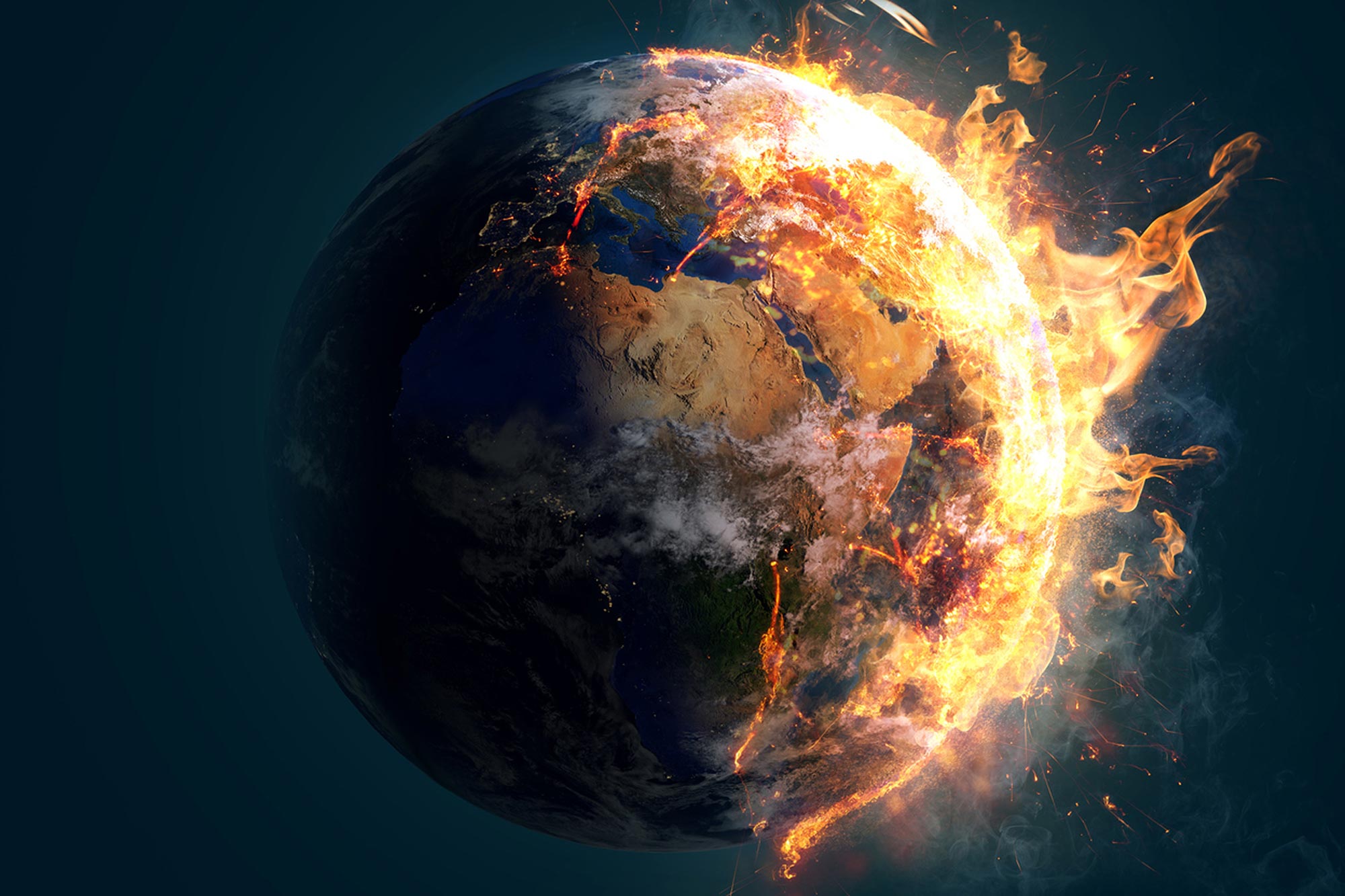

وجد فريق دولي من العلماء أن التغييرات في مدار الأرض والتي تفضل ظروفًا أكثر سخونة ربما تكون قد ساعدت في إحداث ظاهرة الاحتباس الحراري السريع قبل 56 مليون سنة والمعروفة باسم Paleocene-Eocene Thermal Maximum (PETM).
اقترح فريق دولي من العلماء أن التغيرات في مدار الأرض والتي أدت إلى ارتفاع درجات الحرارة ربما لعبت دورًا في إثارة ظاهرة الاحتباس الحراري السريع التي حدثت قبل 56 مليون سنة. يعتبر هذا الحدث ، المعروف باسم Paleocene-Eocene Thermal Maximum (PETM) ، بمثابة تناظرية لتغير المناخ في العصر الحديث.
قال Lee Kump ، أستاذ علوم الأرض في جامعة ولاية بنسلفانيا. “كان هناك الكثير من الاهتمام في إيجاد حل أفضل لهذا التاريخ ، ويعالج عملنا أسئلة مهمة حول سبب الحدث ومعدل انبعاثات الكربون.”
درس فريق العلماء عينات أساسية من سجل محفوظ جيدًا لـ PETM بالقرب من ساحل ماريلاند باستخدام علم الزنبق ، وهي طريقة لتأريخ الطبقات الرسوبية بناءً على الأنماط المدارية التي تحدث على مدى فترات زمنية طويلة ، والمعروفة باسم دورات ميلانكوفيتش.

تعمل فيكتوريا فورتيز (إلى اليمين) ، التي كانت طالبة دراسات عليا في ولاية بنسلفانيا آنذاك ، وجان سيلف تريل ، عالم الجيولوجيا البحثية في هيئة المسح الجيولوجي الأمريكية ، على عينة أساسية من موقع Howards Tract في ماريلاند. الائتمان: ولاية بنسلفانيا
ووجدوا أن شكل مدار الأرض ، أو الانحراف ، والتذبذب في دورانه ، أو مقدرته ، يفضل الظروف الأكثر حرارة في بداية فترة بيتم وأن هذه التكوينات المدارية معًا ربما لعبت دورًا في إطلاق الحدث.
قال كومب ، جون ليون: “قد يكون الزناد المداري قد أدى إلى إطلاق الكربون الذي تسبب في درجات عديدة من الاحتباس الحراري خلال فترة بيتم (PETM) بدلاً من التفسير الأكثر شيوعًا في الوقت الحالي بأن البراكين الهائلة أطلقت الكربون وأطلقت الحدث. عميد كلية علوم الأرض والمعادن.
النتائج المنشورة في المجلة
“Those rates are close to an order of magnitude slower than the rate of carbon emissions today, so that is cause for some concern,” Kump said. “We are now emitting carbon at a rate that’s 5 to 10 times higher than our estimates of emissions during this geological event that left an indelible imprint on the planet 56 million years ago.”
The scientists conducted a time series analysis of calcium content and magnetic susceptibility found in the cores, which are proxies for changes in orbital cycles, and used that information to estimate the pacing of the PETM.
Earth’s orbit varies in predictable, calculable ways due to gravitational interactions with the sun and other planets in the solar system. These changes impact how much sunlight reaches Earth and its geographic distribution and therefore influence the climate.
“The reason there’s an expression in the geologic record of these orbital changes is because they affect climate,” Kump said. “And that affects how productive marine and terrestrial organisms are, how much rainfall there is, how much erosion there is on the continents, and therefore how much sediment is carried into the ocean environment.”
Erosion from the paleo Potomac and Susquehanna rivers, which at the onset of the PETM may have rivaled the discharge of the Amazon River, carried sediments to the ocean where they were deposited on the continental shelf. This formation, called the Marlboro Clay, is now inland and offers one of the best-preserved examples of the PETM.
“We can develop histories by coring down through the layers of sediment and extracting specific cycles that are creating this story, just like you could extract each note from a song,” Kump said. “Of course, some of the records are distorted and there are gaps — but we can use the same types of statistical methods that are used in apps that can determine what song you are trying to sing. You can sing a song and if you forget half the words and skip a chorus, it will still be able to determine the song, and we can use that same approach to reconstruct these records.”
Reference: “Astrochronology of the Paleocene-Eocene Thermal Maximum on the Atlantic Coastal Plain” by Mingsong Li, Timothy J. Bralower, Lee R. Kump, Jean M. Self-Trail, James C. Zachos, William D. Rush and Marci M. Robinson, 24 September 2022, Nature Communications.
DOI: 10.1038/s41467-022-33390-x
The study was funded by the National Key R&D Program of China and the Heising-Simons Foundation.

“متعطش للطعام. طالب. متحمس محترف للزومبي. مبشر شغوف بالإنترنت.”





More Stories
صاروخ فالكون 9 التابع لشركة سبيس إكس يتوقف قبل إطلاقه ملياردير في مهمة خاصة
بقرة بحرية ما قبل التاريخ أكلها تمساح وسمكة قرش، بحسب حفريات
إدارة الطيران الفيدرالية تطلب التحقيق في فشل هبوط صاروخ فالكون 9 التابع لشركة سبيس إكس